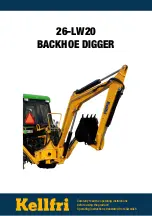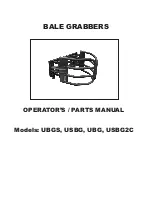
KIROVETS K-744R1, K-744R2, K-744R3, K-744R4 tractors
136
c) direct a jet of dry air to the rear end of the filtering element (on the side of safety
filtering element), perform air-blasting of filtering element until all dust is removed. Adjust
the air-blasting intensity by modifying the air supply. During air-blasting be careful in order
to avoid fractures of the filtering material. If there are fractures or any other through
defects, replace the filtering element.
5
–6 cleaning operations of filtering elements are allowed.
ATTENTION!
In order to avoid the ingress of dust into the cylinder piston group of the
engine, it is necessary to pay special attention to the following:
1. During cleaning (blowdown) of the filtering element, do not allow the ingress of dust
into the internal cavity of the cassette and the suction path of the engine.
2. Avoid installation of a cassette with defected seals at the ends, in particular, with seals
not being glued.
3. See for firm adherence of the end rubber seals of the cassettes to the air cleaner
housing.
4. Regularly check the reliability of tightening and perform, if necessary, retighten the
clamps fastening the corrugated branch pipe connecting the air cleaner with the suction
branch pipe of the engine turbocompressor. During maintenance of the air cleaner check
the suction path downstream of the air cleaner for the absence of any traces of dust
therein. In case of detection of dust, immediately eliminate the causes of its occurrence.
Check tightness of the clean air supply line to the engine and dust removal line from the
air cleaner
After each removal and installation of air cleaner onto the tractor or its disconnection from the
engine, it is necessary to check tightness of the areas of joints of the cleaned air supply line to
the engine as well as the dust removal line from the air cleaner. Perform checking by means of
the device of
КИ-4870-ГОСНИТИ type or by means of a U-shaped water manometer. Before
checking tighten all clamps of the line hoses. Perform checking with the engine operating on
idle run at the crankshaft rotational speed of 30.0 s
-1
(1,800 RPM). Press the device tip to the
area of joint or assumed leak-tightness fault. Variation of the water level in the tube gives
evidence of a leak-tightness fault.
Upon elimination of the fault, check the leak-tightness again.
IT IS PROHIBITED
to operate the
engine with unpressurised air feed channels from the air cleaner to the engine and dust suction
from the air cleaner.
In the course of operation of the tractor, it is necessary to check leak-tightness of the cleaned
air supply line to the engine during M-1 session.
















































